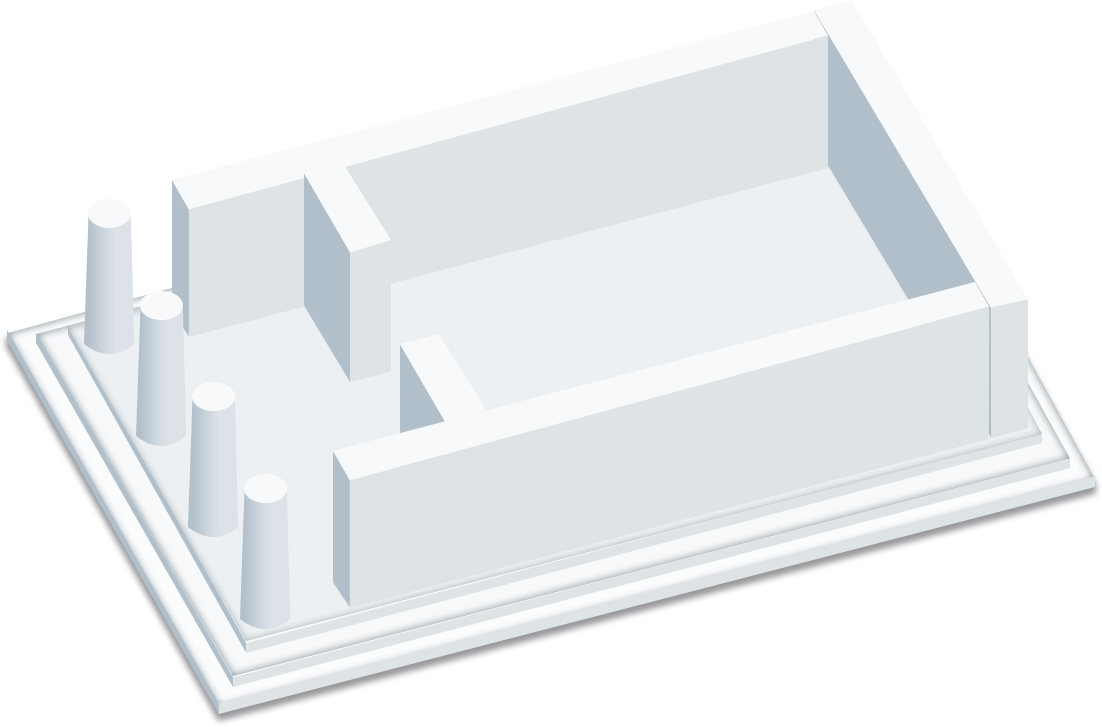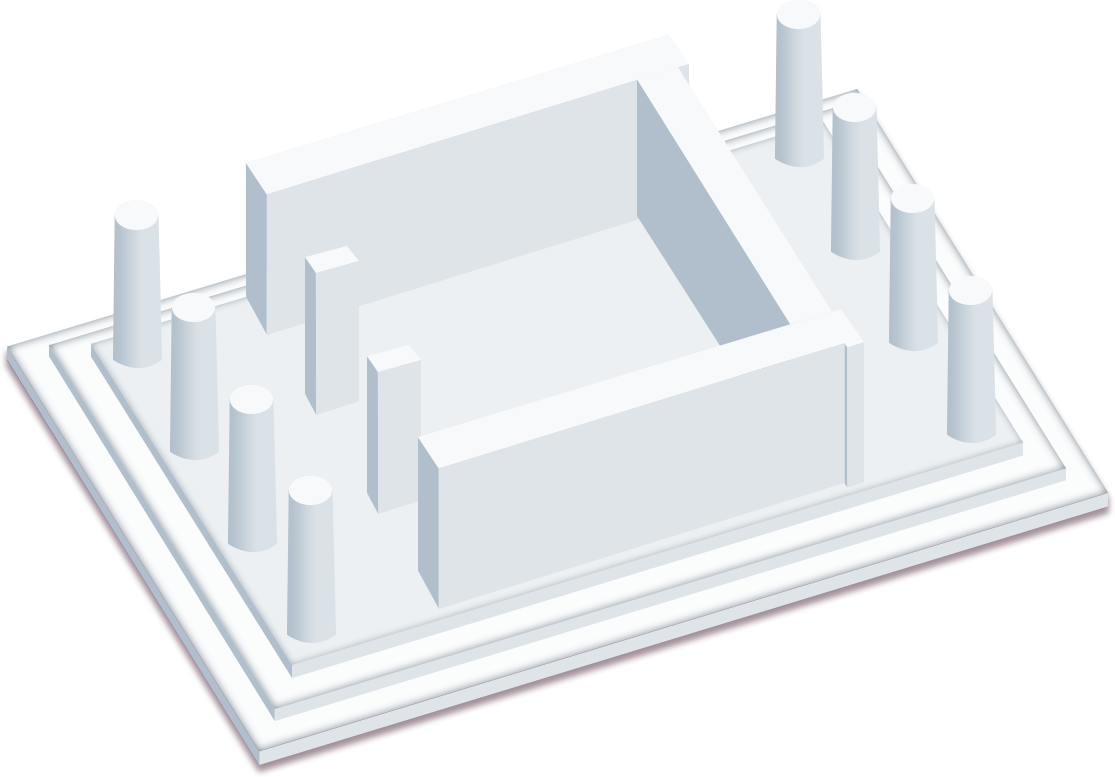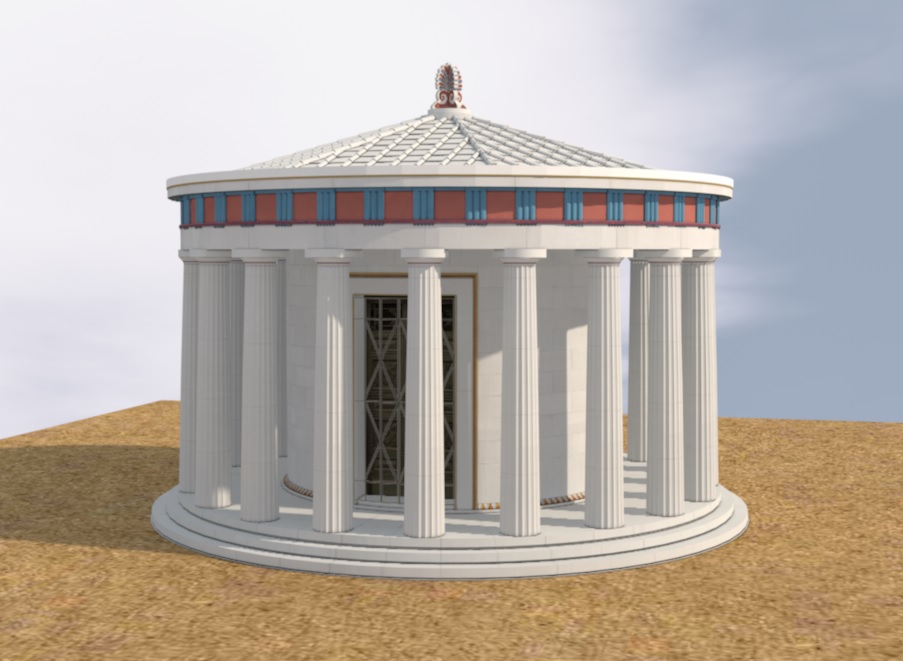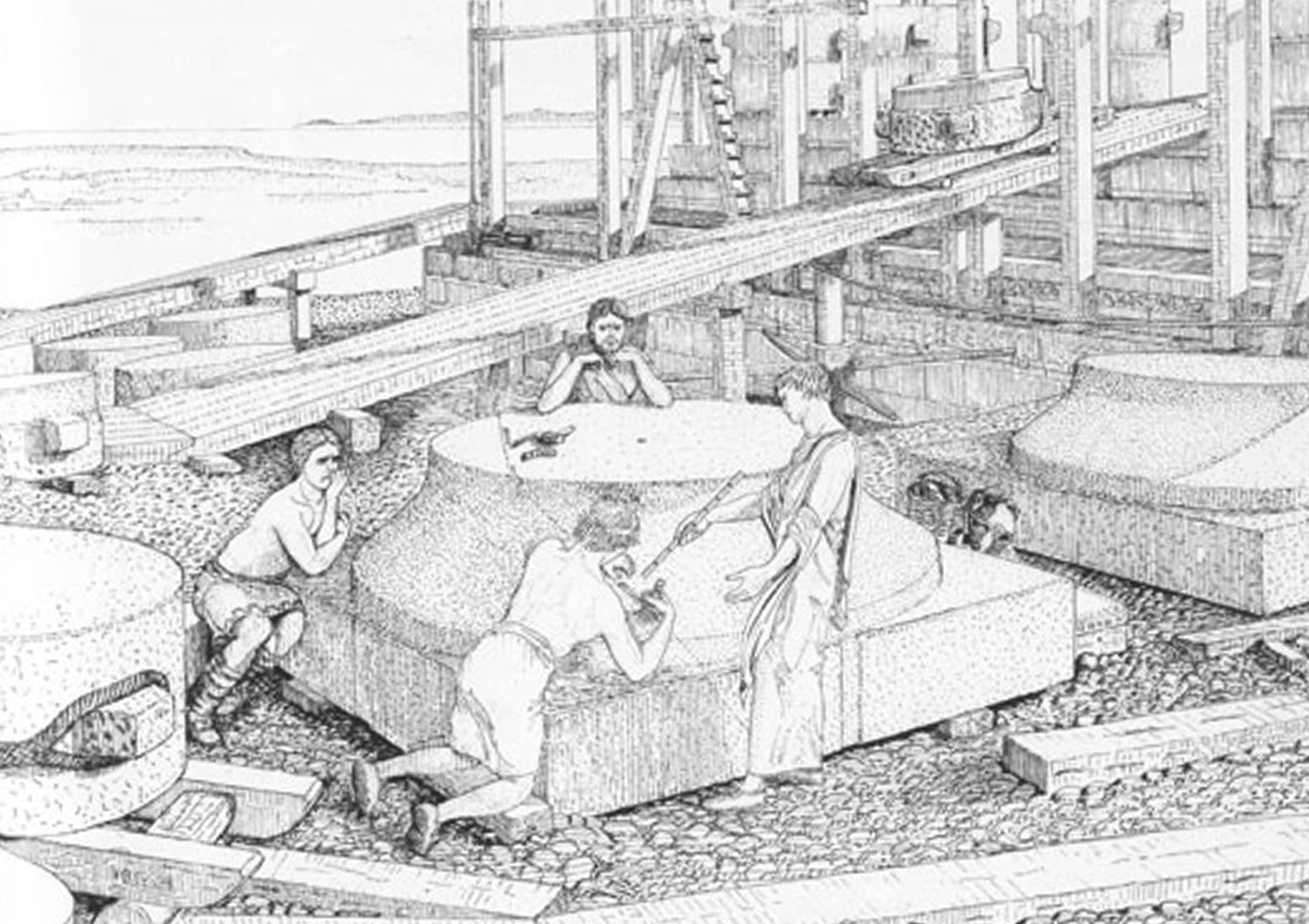
TEMPLE TYPES
T he plainest types were those with columns only on the façade, either with a row of columns (prostasis), or with columns between the antae formed by the projection of the two side walls of the cella (prostyle and in antis temples respectively).
Somewhat more elaborate were the temples with rows of columns on the back as well (amphiprostyle temples). For the largest and richest buildings, however, the perimetric stoa or portico (pteron or peristasis) on all four sides of the cella (peripteral temples) was established from early times. The number of columns on the long sides of peripteral temples was usually double of the front side plus one column, although there were numerous exceptions to this norm.




The architects could add a second row of columns on the narrow sides, between the cella and the peristasis (as in the Parthenon) or columns in antae in the same position (as in the "Theseion"). In this way a spacious area was created in front of the entrance to the cella, the pronaos, and behind it, the opisthonaos. In large temples in Asia Minor, as well as in the temple of Zeus Olympios at Athens, there were double perimetric stoas (dipteral temples).
Another determinant of typology is the number of columns on the front. There are temples that are distyle (two-columned) in antis (like the temple of Themis at Rhamnus), tetrastyle (four-columned, like the temple of Athena Nike), hexastyle (six-columned, like the temple of Zeus at Olympia), octastyle (eight-columned, like the Parthenon) and so on. Naturally, there was always some relationship between the type and the size of the temple.

SINGULAR TEMPLE TYPES

S pecial factors led the architects to design singular types of temples. Cases in point are the Erechtheion on the Acropolis, which housed various cults simultaneously, and the temple of Athena at Sounion, where there are colonnades only on one long and one narrow side, perhaps for reasons of economy. Last, some very large temples, the roofing of which presented problems, had an open-air cella in the form of a large internal court (temple of Apollo Didymaios near Miletos). The functions of circular peripteral monuments, of excellent construction and form, known as Tholoi (at Epidaurus, Delphi, Olympia), still elude us.

THE ARCHITECT
T
he term architect is first refered by Herodotos. Xenophon presents Socrates to say that the profession of architect requires a man with judgment while Plato refers to the difference between an architect's and a master builder's work, as the first requires not only empirical and manual work but also intellectual knowledge. Vitruvius presents the architect as a specialist with broad education, experienced in all fields of practical architecture, but also with knowledge in other areas such as mathematics, music, physics and even philosophy. Of course, in reality, only a small number of architects were so qualified.
Some of them as Ictinos, Pytheos and Hermogenes wrote books on their architectural syntheses while others, such as Scopas, were also distinguished sculptors.

